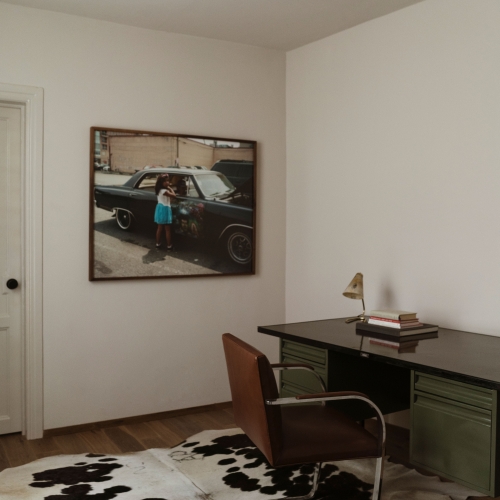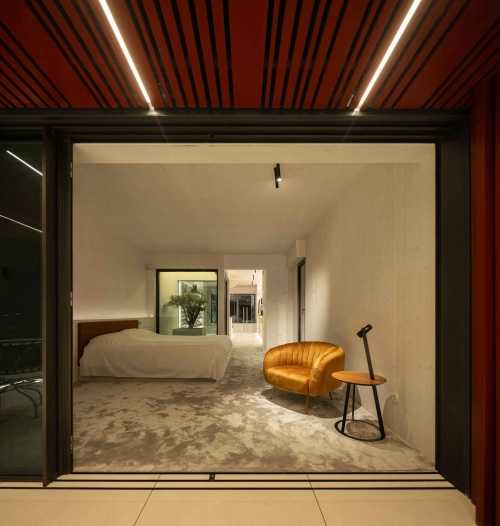journal
Photography: Kevin Scott
20 / 08 / 2025
In Seattle, a discreet house redefines what it means to renovate. Far from the idea of expansion or the obsession with “more”, the In-Kind House emerges from a conscious gesture: to return to the site a home tailored precisely to its inhabitants – neither excess nor lack.
The project rises on the concrete foundations of a 1950s dwelling. From the old house it inherits less the form than the attitude: a respect for both landscape and light. From the outset, the intention was clear: to reimagine the dialogue between the interior and the long-established southern garden, a green retreat cultivated over decades.
The entrance, marked by a cantilevered staircase that seems to rest delicately on the existing rock, sets the tone for the conversation between building and nature. Inside, this continuity unfolds through expansive glazed openings and sliding doors that dissolve the boundary between living room, deck, and outdoor kitchen. Here, the garden ceases to be a backdrop and becomes part of everyday life.
Light is central to the composition. A large west-facing frame, repositioned to embrace a Japanese maple, floods the atrium and main stair, carrying daylight down to the basement, once enclosed and oppressive, now transformed into a luminous, habitable space.
With just 177 m² (1,900 sq ft), the house shows that scale need not mean limitation. The pitched roof, with exposed timber beams and clerestory windows, heightens the sense of openness. Interiors, composed in a palette of natural materials, extend this lightness: plastered walls, solid wood floors, and white oak joinery. Yet there is also room for surprise: in the kitchen and dining area, the oak is stained a deep blue, marking a point of contrast that defines the social heart of the home. The entrance, inspired by Japanese genkan, invites a moment of pause with an integrated bench and discreet cabinetry, allowing the ritual of removing shoes before entering.
The In-Kind House does not seek monumentality. What sets it apart is the subtlety with which it reconciles permanence and transformation: it preserves the spirit of the original home while freeing it from spatial constraints. The result is a place that privileges intimacy with nature, the fluidity of spaces, and essential comfort. An architecture that, rather than imposing itself, follows the rhythm of life and landscape.
The entrance, marked by a cantilevered staircase that seems to rest delicately on the existing rock, sets the tone for the conversation between building and nature. Inside, this continuity unfolds through expansive glazed openings and sliding doors that dissolve the boundary between living room, deck, and outdoor kitchen. Here, the garden ceases to be a backdrop and becomes part of everyday life.
Light is central to the composition. A large west-facing frame, repositioned to embrace a Japanese maple, floods the atrium and main stair, carrying daylight down to the basement, once enclosed and oppressive, now transformed into a luminous, habitable space.
With just 177 m² (1,900 sq ft), the house shows that scale need not mean limitation. The pitched roof, with exposed timber beams and clerestory windows, heightens the sense of openness. Interiors, composed in a palette of natural materials, extend this lightness: plastered walls, solid wood floors, and white oak joinery. Yet there is also room for surprise: in the kitchen and dining area, the oak is stained a deep blue, marking a point of contrast that defines the social heart of the home. The entrance, inspired by Japanese genkan, invites a moment of pause with an integrated bench and discreet cabinetry, allowing the ritual of removing shoes before entering.
The In-Kind House does not seek monumentality. What sets it apart is the subtlety with which it reconciles permanence and transformation: it preserves the spirit of the original home while freeing it from spatial constraints. The result is a place that privileges intimacy with nature, the fluidity of spaces, and essential comfort. An architecture that, rather than imposing itself, follows the rhythm of life and landscape.
For more information, visit GO'C website.






























